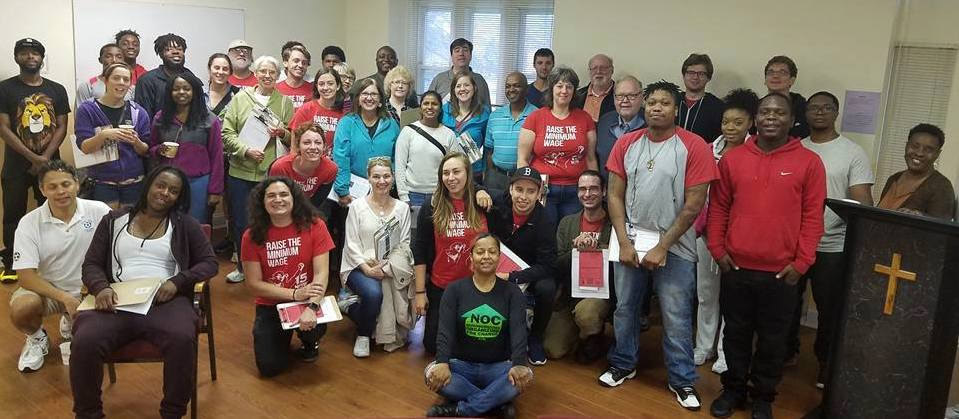

Share
Results of a minimum wage study commissioned by the Minneapolis City Council show that a $15 minimum wage phased in by 2021 would lift wages for 71,000 workers – many of them people of color – with no significant effect on businesses’ operational costs.
The study, which focused on Minneapolis and Hennepin and Ramsey counties, was conducted by researchers from the University of Minnesota, Howard University, Rutgers University and the Economic Policy Institute. They presented their findings to council members at a Committee of the Whole meeting Wednesday.
Among its findings:
- More than 71,000 workers would be immediately impacted by an increase in the minimum wage up to $15 an hour, and several thousand more by the ripple effect of raising the minimum wage;
- Some 42 percent of black workers and 54 percent of Hispanic workers would directly benefit from a $15 an hour minimum wage, seeing income increases of 23 percent or more. Although workers of color are disproportionately affected by minimum wage, 51 percent of minimum wage workers are white and would see an annual wage increase of 19 percent.
- Working families below the poverty line would see a 50 percent increase in their income with a $15/hour minimum wage.
- Twenty-nine percent of working single mothers would benefit from an increase in the minimum wage and a $15 minimum wage would increase their annual salary by 22 percent.
- Approximately 17,000 households would become food secure. Households with minimum wage earners would spend $27 more per week at grocery stores.
- Workers most likely to benefit are in the restaurant, retail and healthcare industries.
While benefitting workers, their families and the community, the study found little or no effect of a higher wage on the operational costs and no evidence that a higher wage would reduce employment.
“This report shows that passing a $15 minimum wage by 2021 will be a tremendous step to reducing poverty in Minneapolis and would especially provide economic opportunity for women and workers of color,” said Ginger Jentzen, executive director of 15 Now Minnesota. “The study counters the big business scaremongering about unemployment, price increases and business closures.”
Workers who have been organizing for an increase welcomed the study.
“I work hard, yet because of low wages I struggle to pay for basic necessities like rent and food for my family,” said Guillermo Lindsey, a fast food worker and member of CTUL, a Minneapolis-based worker center.
“The study shows that passing a $15 an hour minimum wage would have a dramatic impact on families like mine.”
A coalition of labor and community groups has been organizing to raise the minimum wage in Minneapolis and this summer garnered thousands of signatures to have the issue put before voters in the November election. After the Minnesota Supreme Court struck down that effort, they pledged to continue pressing the City Council to take action.
The coalition includes 15 Now Minnesota; Neighborhoods Organizing for Change; CTUL, Centro de Trabajadores Unidos en Lucha/Center of Workers United in Struggle; NAACP Minneapolis; AFSCME Council 5, Amalgamated Transit Union Local 1005; BCTGM Local 22; Communication Workers of America State Council; Minneapolis Federation of Teachers and ESP’s Local 59; Minneapolis Regional Labor Federation; Minnesota Nurses Association; National Association of Letter Carriers Branch 9; People of Color Union Member Caucus; SEIU Minnesota State Council; Teamsters Local 320; UNITE HERE Local 17; United Food and Commercial Workers Local 653 and Working America.
Read the full study and learn more here.

